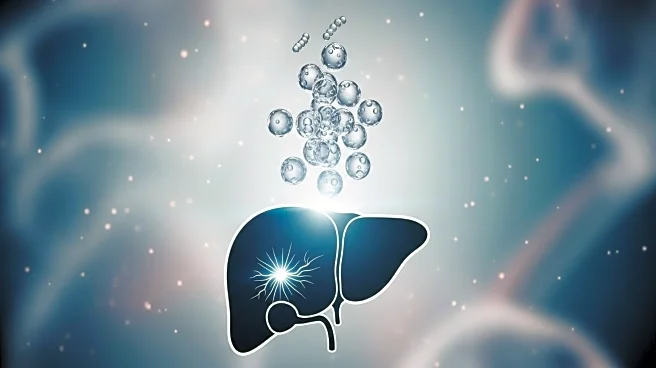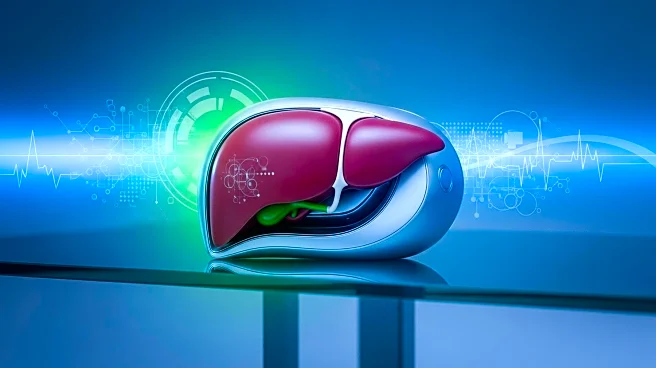What is the story about?
What's Happening?
A recent study has demonstrated the potential of engineered exosomes to promote liver repair and regeneration. Researchers have developed exosomes loaded with WNT ligands and RSPO1 proteins, which are shown to activate WNT signaling pathways effectively. These exosomes have been tested in mouse models, showing promising results in repairing liver function after chronic injury and in aging livers. The study highlights the ability of these exosomes to maintain and protect the functional activity of WNT ligands, even in the presence of antagonists, and their synergistic effect with RSPO1 in enhancing liver progenitor cell fate.
Why It's Important?
The findings from this study could have significant implications for the treatment of liver diseases and injuries. By harnessing the power of WNT signaling pathways, these engineered exosomes offer a novel therapeutic approach that could improve liver regeneration and repair. This could benefit patients suffering from chronic liver conditions, potentially reducing the need for liver transplants and improving recovery outcomes. The study also opens avenues for further research into the use of exosomes in regenerative medicine, potentially extending beyond liver repair to other tissues and organs.
What's Next?
Future research will likely focus on optimizing the delivery and efficacy of these exosomes in human models. Clinical trials may be necessary to evaluate the safety and effectiveness of this treatment in humans. Additionally, researchers may explore the application of this technology to other types of tissue repair and regeneration, expanding its potential impact in regenerative medicine.
Beyond the Headlines
The ethical implications of using engineered exosomes in medical treatments will need to be considered, particularly in terms of accessibility and cost. As this technology advances, it will be important to ensure that it is available to a wide range of patients and does not exacerbate existing healthcare inequalities.
AI Generated Content
Do you find this article useful?













